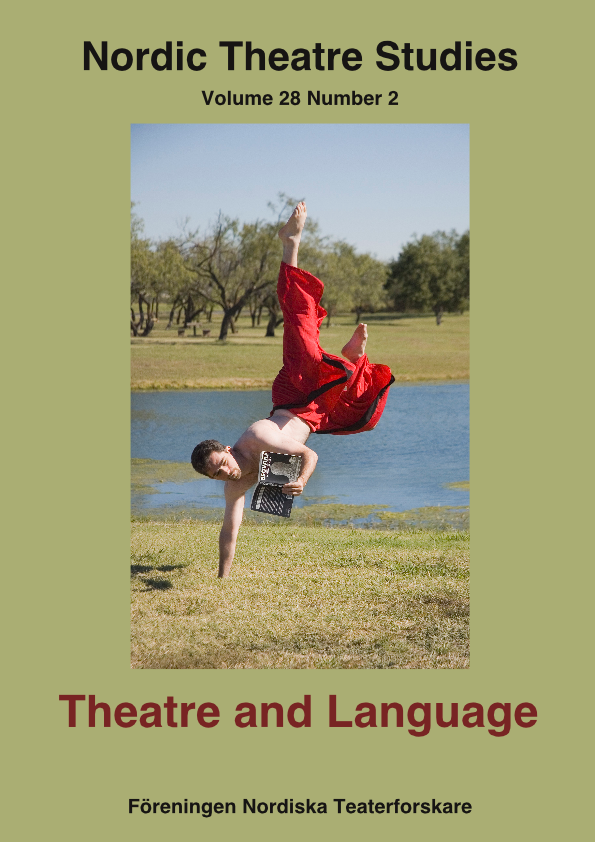Parody as Translation: Ibsen’s new woman in the pages of Punch
DOI:
https://doi.org/10.7146/nts.v28i2.25518Keywords:
New woman, parody, Ibsen, humour, modern drama, British audiencesAbstract
“Parody as Translation: Ibsen’s new woman in the pages of Punch” examines four comic parodies of Ibsen written by Thomas Antsey Guthrie, a British journalist and humourist also known as F. Antsey. The plays examined include parodies of Rosmersholm, A Doll’s House, Hedda Gabler, and The Master Builder — comically abbreviated renditions of Ibsen originals that featured striking new women characters. Reading these parodies as responses to their originals, I examine what happens to the new woman character when she is subjected to comic parodic treatment. Although the parodies do not directly focus on the alteration of these key female characters, I argue that Antsey’s parodic critique of Ibsenian dramaturgical mechanics, conventions, and tropes indirectly impacted their representation, transforming them from tragic heroines to comic figures and raising further questions about the relationship between gender and comedy. In each parody, the psychological complexity of the new woman character is compromised through Antsey’s alteration of one or more of her key purposes within Ibsen’s text. Overall, I argue that the reassessment and reinterpretation of these key Norwegian texts can be viewed as a mode of transition between Ibsen and those impacted and influenced by him, providing a cultural medium or “buffer” that helped connect the notably “serious” Scandinavian playwright with British audiences.References
Abrams, M. H. 1988. A Glossary of Literary Terms. Florida: Holt, Reinhart, and Winston.
“’A Loud, Mocking Clamour of Noise…’ Punch Or: The London Charivari: A Cultural Treasure Trove” in The Victorianist, 2013.
Antsey, F. 1893. Mr. Punch’s Pocket Ibsen: A Collection of Some of the Master’s Best-Known Dramas Condensed, Revised, and Slightly Rearranged for the Benefit of the Earnest Student. New York: Macmillan.
Carlson, Susan. 1991. Women and Comedy: Rewriting the British Theatrical Tradition. Michigan: University of Michigan Press.
Cunningham & Lawrence & Reich, John J. 2009. Culture and Values, Volume II: A Survey of the Humanities with Readings. Boston: Cengage Learning.
Davis, Tracy C. 1985. “Spoofing ‘The Master’: Parodies and Burlesques of Ibsen on the English Stage and in the Popular Press” in Nineteenth Century Theatre Research, vol. 13 no. 2, 1985.
Egan, Michael. 1972. Ibsen: The Critical Heritage. London: Routledge.
Franc, Miriam Alice. 1970. Ibsen in England. Folcroft: Folcroft Press.
Frye, Northrop. 1981. “The Mythos of Spring: Comedy” in Comedy: Meaning and Form. New York: Harper and Row.
Gates, Joanne. 1985. “Elizabeth Robins and the 1891 Production of Hedda Gabler” in Modern Drama, vol. 28 no. 4, 1985.
Hutcheon, Linda. 2000. A Theory of Parody: The Teachings of Twentieth-Century Art Forms. Urbana: University of Illinois Press.
Kelly, Katherine E. 2008. “Pandemic and Performance: Ibsen and the Outbreak of Modernism” in South Central Review, vol. 25 no. 1, 2008.
Shaw, Bernard. 1891. The Quintessence of Ibsenism. Boston: B. R. Tucker.
Templeton, Joan. 1997. Ibsen’s Women. Cambridge: Cambridge University Press.
Downloads
Published
How to Cite
Issue
Section
License
The copyright belongs to the authors and Nordic Theatre Studies. Users can use, reuse and build upon the material published in the journal but only for non-commercial purposes. Users are allowed to link to the files, download the files, distribute the files on a local network (preferably by links), upload the files to local repositories if their institutions require them to do so, but not republish the files without proper agreements with the journal and the author.

